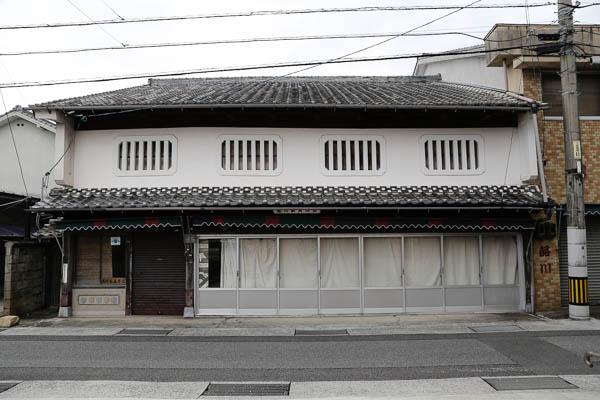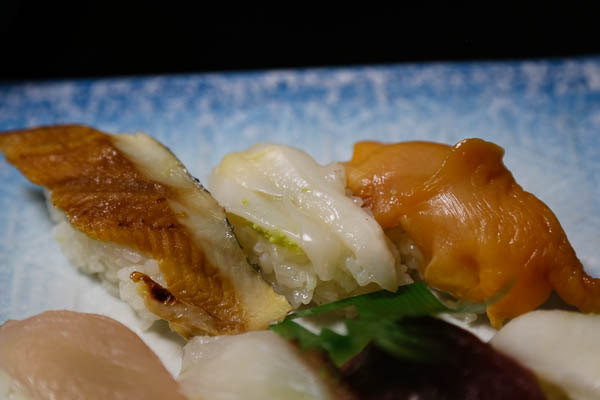
Day 2 at this little-known enclave of potters and former Samurai clans, and we saw why Hagi may just be the most underrated destination in West Japan.

After all Hagi boasts perhaps Japan's best-preserved feudal town aside from Kyoto's Higashiyama district, not to mention its centuries-old heritage of high culture and some fantastic seafood. And considering the tiny fraction of visitors compared with world-famous Kyoto, this is almost a dream for independent travelers.

Getting here though could be more of a nightmare, especially during rainy season when mountain roads, and occasionally JR train tracks, could be subject to sudden closures due to rockslides. Even at the best of times the nearest Shinkansen station is still 90 minute away by highway bus -- and don't even think about arriving by train unless you're prepared for multiple transfers taking twice as long.

Those who make the journey would be discover a fascinating town full of legends such as the Choshu Five, a group of young Samurai smuggled by a defiant feudal lord out of seclusionist Japan to study at University College London, and later returned to become great statesmen of their era. For history buffs, this is the birthplace of modern Japan.

We opted for two nights at one of Hagi's numerous hotspring Ryokans in the autumn foliage season of late November, which also coincided with the local season for sampling poisonous Fugu fish, a delicacy so deadly that I wasn't even permitted to bring some back to Canada. Day 1 took us to the town's historic eastern neighborhoods, and Day 2 would be spent at the Samurai quarters surrounding the former castle.

Starting out from our Ryokan on Kikugahama beach, the historic quarter begins literally one block to the south where centuries-old alleys are flanked by the stone defensive walls of Samurai mansions, many still occupied by modern descendants of the old feudal domain's warrior-retainers.

The image of yellow Natsu-Mikan overhanging grey earthen rooftiles is a quintessential street scene in Hagi. Originated with the Meiji Restoration when the Samurai class lost their livelihood and were encouraged to take up orange farming, these fruits would not become edible until next May despite their ripening appearance.

Just beyond the outer moat is the town's most popular attraction, a 400-year-old merchant district of whitewashed earthen walls and latticed wooden gates leading to feudal Hagi's most affluent trading houses, best exemplified by the meticulously manicured courtyard garden of the Kikuya Residence.

Holding the monopoly as the feudal domain's official buyer for centuries, the Kikuya clan amassed great fortunes and built this enormous walled estate that encompassed everything from accounting offices to secret underground safes to its own silk farm. To this date the Kikuya Residence still occupies most of its block, only one third of which is open to visitors.

While the main residence was expectedly crowded even on a weekday, the expansive rear garden and Zashiki, normally off-limits but open to visitors for a couple months a year during late spring and the autumn foliage season, remained relatively serene as it was skipped by the legions of domestic Japanese tourists on tight itineraries.

Occasionally the Shogun's emissaries were housed here when on official business, bestowing honour upon the host and strategically segregating the emissaries from the secretly insubordinate feudal lord residing within the castle walls.

Centuries of isolation and animosity towards the Shogun fostered a free-thinking culture and nurtured the bravest and brightest revolutionaries towards the end of Japan's feudal era, when this neighborhood became the hotbed for a regional insurgency that gathered momentum across West Japan, overthrowing the ruling Shogun and propelling Japan into the modern era.

Now elevated to UNESCO World Heritage Site status, this modest neighbourhood of former textile makers and Sake breweries produced no less than four eventual prime ministers, in addition to prominent nation builders such as Takasugi Shunsaku, whose rifle militia units proved instrumental in defeating the Shogun's forces during a small civil war.

The 400-year-old Enseiji temple served as the childhood school for Takasugi and Ito Hirobumi, one of the Choshu Five sent overseas by the feudal lord to study western science and technology. Upon returning from University College London, Ito and his four associates went on to become respectively modern Japan's first ever prime minister, foreign minister, infrastructure minister, father of Japanese railways and head of National Mint.

One delightful distraction at the Samurai quarter was the abundance of outlet shops for locally fired Hagi-yaki earthenware, highly treasured by tea ceremony masters and now by beer drinkers for its tendency to change colour over time. Cautiously we purchased two bowls and a cup and specifically instructed the shopkeepers to bubble-pack them for our return flight ... and they did arrive safely at our kitchen.

For lunch we took advantage of discounted Teishoku offerings at a classy Ryotei, centered around fresh local seafood in the forms of Shioyaki or Tempura, to be reviewed in an upcoming article. We then hopped on the trusty community shuttle for a few stops towards the old castle grounds, passing by various Samurai residences such as the pictured weapons storehouse of the Masuda clan.

The castle itself had long been dismantled during the Meiji Restoration, leaving the massive stone foundations as testimony to a mighty fortress on its own little peninsula, once considered impenetrable before the arrival of Western warships with their cannons.

Nowadays the castle grounds is surrounded by pottery kilns and their showrooms for upscale tea bowls, inheriting a distinguished tradition from Korean artisans captured and brought to Hagi during Hideyoshi's invasion of Korea in late 16th century. Masterpieces fetching for a million yen or more is quite the norm for quality Hagi-yaki from the hands of well-known ceramists.

In the late afternoon we hopped on the community shuttle again, stopping by a neighbourhood of upper class Samurai residences known for these iconic Kaimagari alleys, angled specifically for staging ambushes and slowing the enemy's advance towards the castle.

We finished our day with a peaceful sunset at the old residence of the Kuchiba, a prominent Samurai clan whose descendents still occupy a large modern mansion next door. After two busy days of sightseeing I still wished for more time to visit the Aibagawa district, perhaps even a third full day to visit the karstic caves of Akiyoshido, as Hagi simply has too much to offer.

Back at our Ryokan we snatched up more Mikan/Yuzu-flavored drinks and condiments, as well as ready-to-eat Fugu as souvenirs from this remote and slightly exotic corner of Japan. Along with our Machiya-on-a-hill at Kurashiki, historic Hagi ranked among my favorite destinations in West Japan, more so than the immensely popular Hiroshima or Miyajima. And I haven't even started with the incredible seafood, the subject of the next two articles.











































